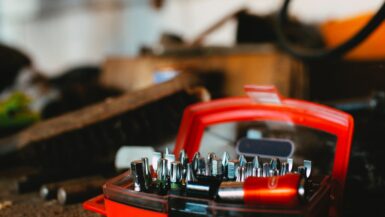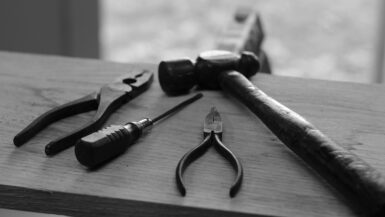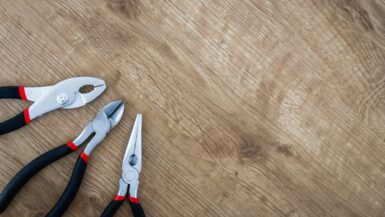A bike in excellent condition is essential to a successful and safe ride. But bikes, like any other equipment, eventually need some repair. As a cycling enthusiast, knowing how to keep your bike in top-notch condition can be a great asset. This article will provide standard bike repair procedures that every rider should know. We will discuss what tools are best for basic bike adjustments and repairs, how to check your bike for any necessary repairs, and how to fix some of the most common bike problems quickly.
Identifying and Evaluating Bike Components
Before any bike repair, it is important to thoroughly inspect the bike for signs of wear and tear and any potential issues. Regular and thorough inspections should be conducted to ensure the safety and performance of the bike. Inspect and evaluate the bike’s handlebars, brakes, gears, tires, and wheels for any signs of damage and wear. Check for loose or broken parts, and inspect the chain for rust or excessive stretching. Finally, review the bike frame for cracks or other signs of damage.
Replacing or Upgrading Bicycle Parts
If any of the bike’s components need to be replaced or upgraded, the repair should begin by selecting the correct part. Many bike components are multi-functional and may be used to replace or upgrade existing features or to add new ones. Consider cost, durability, safety, and compatibility factors when selecting the right components. Additionally, consider the type of cycling that will be done, as some parts are better suited for certain riding styles.
Installing and Adjusting Bike Components
Proper installation and adjustment are required to ensure the adequate performance of a bike and its components. Please read and understand the manufacturer’s instructions for the bike and its parts before attempting any repair. Properly disassemble the bicycle and the details before beginning the installation process. Use the correct tools for the job and check for any manufacturer-recommended adjustments to ensure proper installation.
Testing Bike Components
Once all components are installed and adjusted, testing the bike and its parts is essential to ensure functionality and safety. Test the brakes, gears, tires, and wheels for proper operation and make any necessary adjustments. Additionally, confirm that the chain is well-lubricated and correctly tensioned and that the handlebars are adjusted to the desired position. Test the bike with appropriate protective gear to ensure proper operation and safety.
Maintaining and Troubleshooting Bike Components
Proper maintenance of the bike and its components is essential for its long-term performance of the bike. Regularly clean the bike, inspect all parts for wear and damage, and apply lubricants as needed. Troubleshoot any potential issues and make necessary repairs. Contact a qualified bike repair technician for any problems that may be too complex for the rider to handle.
Cleaning and Lubricating Your Chain
Like any other machine, your bicycle needs regular maintenance to maintain the best working condition. One of the critical elements of this maintenance is cleaning and lubricating your bicycle chain. Keeping your bicycle chain clean and oiled for a smooth ride, safe shifts, and long chain life is essential. Keeping your chain clean and oiled also helps prevent rust. Here’s how to clean and lubricate your chain:
Removing Debris from Your Chain
The first step in chain maintenance is to remove existing debris from the chain. Any dirt, dust, and grit left on the chain will eventually wear the chain down, create resistance and reduce its life of the chain. Start using a chain lube cleaning brush (or an old toothbrush) to clean your chain. With the chain on the bicycle, begin brushing the chain using the lube-cleaning brush. Do this while turning the cranks back and forth. Make sure to get into all the nooks and crannies.
Cleaning Your Chain with Degreaser
Once you’ve gotten rid of the dirt and grime on your chain, it’s time to degrease it. Start by applying an aerosol or citrus-based degreaser. Don’t spray the degreaser directly on the chain; instead, pour it onto the lube cleaning brush (or your old toothbrush) and use it to scrub the chain from the inside and out. Allow the degreaser to sit on the chain for a few minutes before wiping the chain down with a cloth or rag. Make sure to get all the degreasers off of the chain.
Lubricating Your Chain
After you’ve thoroughly degreased your chain, it’s time to lubricate it. Begin by selecting the right chain lube for your bike. Wet lubes are well-suited for riding in damp or muddy conditions, while dry lubes are better for dry conditions. Once you’ve chosen the appropriate chain lube, apply a small amount to the inside of the chain, making sure to get into all the links. Finally, rotate the cranks to let the lube penetrate the chain and leave the linkages lubricated. Once the chain is lubricated, wipe off any excess lube with a rag.
Cleaning and lubricating your bike chain is an integral part of bike maintenance that every rider should do regularly. This simple maintenance can help ensure that your chain runs smoothly and lasts longer.
Adjusting Brakes and Derailleurs
Bicycle brakes and derailleurs are essential components for safe and efficient cycling. Brakes help you slow down and stop quickly, while the derailleur helps the chain to move between gears. Both of these components work together to create a smooth and comfortable ride. Understanding how these components work and how to adjust them is an essential part of bike maintenance and repair.
Checking Brake Mechanics
The first step in adjusting brakes and derailleurs is checking each component’s mechanics. Ensure the brakes are correctly adjusted with the proper tension. You should also check the aliment of the brake pads so they are straight and square to the rim. They will rub against the edge and cause brake noise if they are not. Once you have checked the mechanics of the brakes, you can move on to adjusting the derailleur.
Adjusting The Derailleur
The derailleur is responsible for shifting the chain between gears. To adjust the derailleur, you will need to loosen the cable tension and change the position of the high and low-limit screws. Depending on your derailleur type, you may also have to adjust the b-screw.
Tuning The Brakes
Once you have adjusted the derailleur, you can continue tuning the brakes. Make sure the brake arms are parallel to each other, and the brake pads are correctly aligned. It would help if you also tightened the cable tension, so the brakes worked properly. Make sure to test your brakes after making adjustments to ensure that they function correctly.
Safety Checks
Before you hit the road, doing a few safety checks on your bike is essential. Ensure the brakes and derailleur are adjusted correctly and that the chain runs freely. Also, check that the tires are inflated to the correct pressure and that the wheels are spinning smoothly. Taking the time to do these safety checks will ensure you get the most out of your ride.
Maintaining Your Bike
To keep your bike in good condition, it is important to do regular maintenance. This includes cleaning the chain, lubricating the bearings, and testing the brakes and derailleur. Also, check the tire pressure and inflate the tires if necessary. Regular maintenance and tune-ups will help keep your bike in peak condition, ensuring a safe and comfortable ride.
Troubleshooting Gear Shifting
If you are having difficulty shifting gears on your bike, the first step is diagnosing the problem. Start by ensuring that the chain is on the correct gears and engages on all the gears. Make sure the derailleur is aligned correctly, as misalignment can cause shifting problems. Check the cable tension, as it may be too loose or tight. Also, inspect the shifter, as there might be something wrong with the internal mechanism.
Cleaning the Gears and Chain
One of the most common things that can cause shifting issues is a buildup of dirt and grime on the gears and the chain. This can cause the chain to skip gears or even fail to engage altogether. To clean the chain and the gears, use a chain cleaner or degreaser and a brush. Work the cleaner and brush into the chain, then wipe it off with a rag. It would be best to clean the gears, as dirt and debris can cause them to wear out prematurely.
Adjusting the Cable Tension
If the cable tension is off, it can cause shifting issues. This is because when the cable is too tight, the derailleur won’t be able to move the chain to the next gear. Conversely, if the line is too loose, the derailleur won’t be able to hold the chain in place. To adjust the cable tension, use an adjustable wrench and adjust the barrel adjuster.
Replacing the Cable
If your cable is worn or frayed, you may need to replace it. Start by removing the line from the shifter. Then, use an Allen key to unscrew the bolt that holds the cable in place on the derailleur. Once the bolt has been removed, pull the old line out and replace it with the new one. Secure the new cable in place with the bolt, and then attach the cable to the shifter.
Replacing the Derailleur
If you find that adjusting the cable tension and replacing the cable doesn’t fix the problem, you may need to replace the derailleur. To do this:
Start by removing the old derailleur and then attach the new one.
Align it correctly, as misalignment can cause shifting issues.
Connect the cable and adjust the tension until the gears turn perfectly.
Replacing a Flat Tire
Before attempting to replace a flat tire, any cyclist needs to understand the basics of tire repair. A flat tire can occur from various causes, such as a puncture, a tear in the tire, or a blowout due to air pressure. Understanding and recognizing the flat tire’s underlying cause helps a cyclist determine the best repair strategy.
Gathering the Necessary Supplies
Replacing a flat tire requires the cyclist to have certain supplies on hand. First, the cyclist should have a spare tube, replacement tire, tire tools, and a pump. The line should match the size of the tire that needs to be replaced. Additionally, many cyclists opt to carry a patch kit if the flat tire is due to a puncture that can be easily patched.
Removing the Tire
To remove the tire, the cyclist should start by loosening the tire’s valve stem. A valve stem cap wrench can be used to reduce the cap. Then, use tire tools to remove the tire from the rim. A tire lever may be necessary if the tire is difficult to remove.
Reinstalling the Tire
Next, the cyclist will need to reinstall the tire onto the rim. The cyclist should insert the valve stem into the tire’s hole and edge. Begin pushing the tire onto the boundary from one side until it is halfway on. Then, use tire tools to make the tire the rest of the way onto the rim. Ensure to properly align the tire and rim, as misalignment can cause the tire to fail.
Inflating the Tire
After the tire is mounted, the cyclist can inflate the tire. Start by inserting the pump head into the valve stem. Pump up the tire until it reaches the recommended pressure. Then, tighten the valve stem cap to ensure the seal is tight.
Testing the Tire
Finally, cyclists should always check the tire’s pressure and overall condition before riding. Make sure the tire is inflated correctly and the seal is tight. Additionally, visually inspect the tire to check for any defects or signs of damage. Once the tire has been tested, the cyclist can head out for a ride.
Tightening Nuts and Bolts
Riding a bicycle can be a fun and rewarding experience – but only when the bike is properly maintained. One of the essential skills a bike rider must master is identifying and replacing worn components. Just as important, however, is the ability to tighten nuts and bolts correctly. Knowing the proper way to do this will help ensure that your bike is in the best condition possible.
Safety First: Wear the Right Gear
Before tightening or loosening any bolts or nuts on your bike, ensure you are adequately equipped. This means appropriately outfitting in safety gear, including safety glasses and gloves. Also, make sure you have the right tools for the job. A quality set of wrenches and socket wrenches is a must, along with a torque wrench, if you plan to make more extensive adjustments.
Check the Threads
When tightening or loosening nuts and bolts, you must check the threads first. Make sure they aren’t stripped, bent, or otherwise damaged. If they are, replace the fasteners with new ones. You’ll need to ensure you have the correct size bolts and nuts for the job.
Apply Lubrication as Necessary
Often, nuts and bolts can become stiff and difficult to move. To make these components easier to operate, it’s a good idea to apply some lubrication. You can use any bicycle-safe lubricant for this. Apply a few drops to the threads of the fasteners and work them back and forth to allow the oil to penetrate and lubricate any internal components.
Apply the Right Amount of Pressure
When tightening nuts and bolts, you must ensure you don’t overtighten. Over-tightening can strip the threads or damage the components. To avoid this, use a torque wrench to set the desired torque. Most bikes have torque specifications for different parts, so make sure you use the correct value when tightening. This will help ensure that your bike components are correctly and securely installed.
Check the Nuts and Bolts Regularly
To maintain a safe and well-functioning bicycle, checking the nuts and bolts regularly is vital. Look for any signs of damage or wear, and replace any components as needed. This is especially important after major rides or jumps, as the extra forces can wear down some parts more quickly. Taking the time to do regular maintenance like this will go a long way in protecting your bike and keeping it running smoothly for years to come.
Inspecting and Adjusting Your Suspension
Your bike’s suspension system is critical in ensuring your safety and comfort while riding. Before adjusting your suspension, it is important to check the components for any wear and tear. Inspect the shock, fork, and air sleeve for signs of damage, corrosion, or deformation. Check for cracks or abrasions and ensure that all component screws are securely in place.
Checking Your Air Pressure
After inspecting your suspension components, you should check the air pressure. Different suspension systems require additional air pressure. To maintain optimal performance, having the same air pressure specified for your suspension system is important. Use a pressure gauge to determine the air pressure in the shock or fork. Adjust the air pressure as needed and secure the valve cap after you have finished.
Adjusting Settings on Your Suspension
Once the air pressure is correct, you can adjust the suspension settings. Many suspensions have adjustable compression, rebound, and preload settings. Compression and rebound settings allow you to customize the force to compress and extend your shock. Preload settings will determine the pressure your shock can absorb when you hit bumps or obstacles while riding.
Cleaning and Lubricating Your Suspension Components
After adjusting your suspension, cleaning and lubricating the components is essential. Use a degreaser or solvent to remove dirt or debris from the shock and fork. Once the pieces are clean, lubricate all moving parts with a suspension-specific lubricant. You should also check the condition of the oil in the shock or fork and make sure to replace it if necessary.
Testing Your Suspension Settings
Once you have finished adjusting and lubricating your suspension components, you should take your bike out for a test ride. Pay attention to how your suspension reacts over bumps, curves, and other obstacles. Make adjustments to your suspension settings before heading out on your next ride. These simple bike repair procedures will help ensure that your suspension is in optimal condition for safe and comfortable cycling.
Properly Protecting Your Bike
It doesn’t matter if you’re out for a leisurely ride or commuting to work. It’s essential to take the necessary steps to ensure your bike is secure. Thieves and vandals can quickly damage or steal your bike if it’s not adequately secured. So if you have a bike, you should take the time to protect it adequately.
Types of Bike Locks
Using a good quality bike lock is the best way to protect your bike from theft. Several types of locks are available, depending on your needs, such as U-locks, cable locks, and chain locks. U-locks are the most vital type of lock and are generally recommended for areas with high levels of theft. Cable locks are lighter and more flexible, making them suitable for short-term use. Chain locks offer greater flexibility but are more easily vulnerable to attacks than U-locks.
Locking Up the Bike
Once you have selected a good quality bike lock, it is important to lock it properly. Make sure to secure your lock to a solid, immovable object to minimize the risk of theft and damage. Try to position the lock so it is difficult to access, such as close to the ground or behind a railing or fence.
Other Measures to Take
In addition to using a bike lock, there are other steps you can take to protect your bike. If you’re leaving your bike in a public place for an extended period, it is recommended that you install a bike alarm. Bike alarms are an excellent deterrent for thieves; the loud beeping sound will help draw attention to someone attempting to steal your bike.
It would be best if you also considered removing all accessories, such as lights, bags, and other items that can be quickly removed. Thieves may target these items if they are left on the bike. Additionally, be sure to register your bike with the local police department.
Safety First
It is important to protect your bike to enjoy safe and worry-free rides. Taking the necessary steps to secure your bike with a high-quality lock and other safety measures will help ensure that your bike is secure and can be enjoyed for many years.
Caring for Your Wheels
Proper care and maintenance of your bike’s wheels are essential to ensure safe riding and prolong your wheels’ life. A few simple steps can keep your wheels spinning like new.
Cleaning the Wheels
Regular cleaning is vital for keeping your wheels in top condition. Make sure to use a non-abrasive cleaner designed specifically for bike components. Remove the wheels from the bike and use a soft cloth to wipe off dirt and debris. If you have especially grimy wheels, you may need a toothbrush for the stricter dirt and a degreaser. Once the wheels are clean, rinse them off with water and dry them with a soft towel to prevent rusting.
Checking the Bearings
The bearings can be weak in your wheels and should be checked periodically. You’ll need to remove the wheel and take off the axle nut or quick-release skewer to do this. Inspect the bearings for excessive wear or rust. If everything looks good, reassemble the wheel and make sure the wheel spins smoothly. If the paths are cracked or worn, or the wheel doesn’t spin properly, they’ll need to be replaced.
Checking the Rim
The rim should be checked for cracks, dents, or other signs of damage. If the wheel isn’t spinning, it may have been bent. Check for any wobbling or other inconsistencies. If the rim is damaged, it will need to be replaced.
Checking the Spokes
The spokes should be regularly inspected for any signs of damage or wear. Look for loose, broken, or bent spokes. Make sure the wheel is still spinning true, and the tension is even. If any spokes are damaged, they will need to be replaced.
Adjusting the Hubs
The hubs should be checked to make sure they’re properly adjusted. This ensures that the wheel spins smoothly and prevents any binding or grinding. If necessary, you can adjust the tension of the spoke nipple or the conical washer.
Following these simple steps can keep your wheels running smoothly and prolong their life. Regularly performing these checks and maintenance will ensure that your bike’s wheels are safe and reliable.
Make Bike Repair Part of Your Routine
All riders need to know how to take care of their bikes in case of an unexpected repair or tune-up. Simple bike repair procedures, such as checking on the brakes and chain, tightening bolts, and ensuring the bike is clean, can help prevent more significant issues down the road. A few minutes of weekly maintenance can go a long way in providing a safe and smooth ride. Bicycle repair is a critical aspect of being a cyclist, and with a bit of know-how and routine maintenance, any rider can be prepared to tackle common problems.






Leave a reply